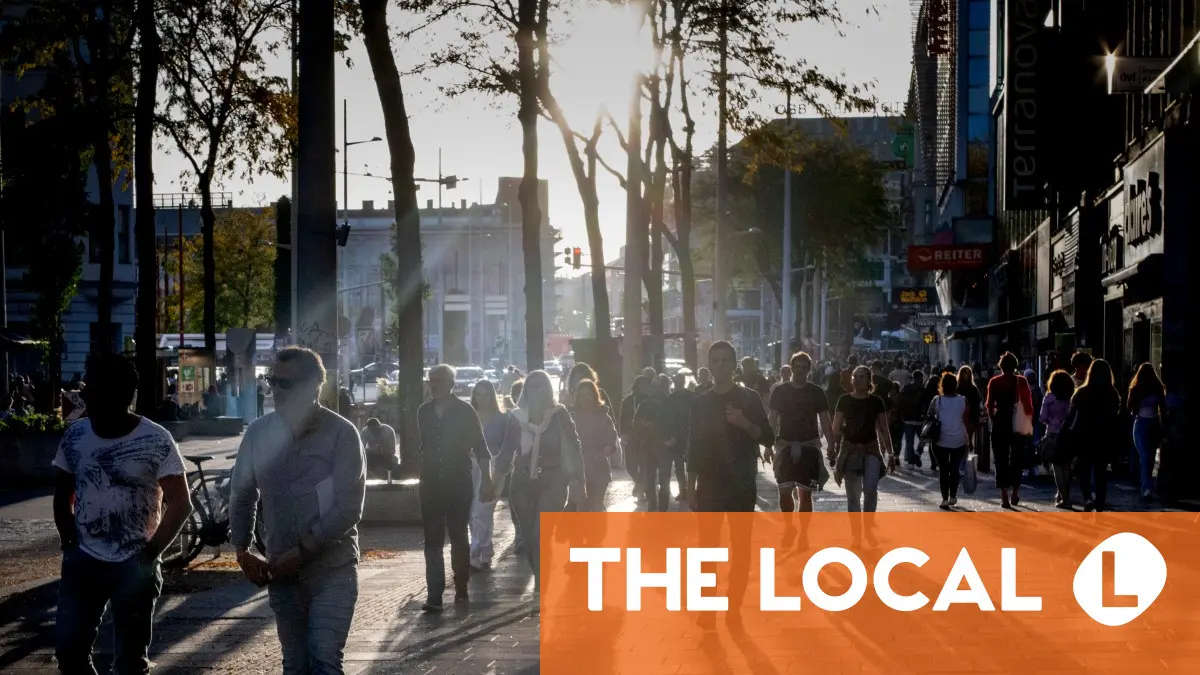Austria’s population growth is driven entirely by immigration. A new report reveals who’s arriving, how they feel about life in Austria, and what locals think.
Austria’s population continues to grow—but not because more people are being born. According to Statistics Austria’s latest report, immigration is the only reason the country isn’t shrinking.
Without immigration, Austria’s population would eventually drop back to levels last seen in the 1950s.
So, who is moving to Austria? And how are migrants integrating? Here’s what the new Migration and Integration Yearbook 2025 reveals.
READ ALSO: How hard is it for immigrants in Austria to find a job?
Austria is now 27.8 percent people with a migration background
In 2024, around 2.51 million people in Austria had a migration background—that’s about 27.8 percent of the total population. This number has risen steadily for nearly a decade. In 2015, the share was just 21.4 percent.
When statisticians talk about a “migration background,” they include only first-generation migrants (born abroad) and second-generation migrants (born in Austria, but with two parents who were born abroad). For 2024, the numbers break down like this:
First-generation migrants: 1.87 million people (20.8 percent of the population)
Second-generation migrants: 634,300 people (7 percent of the population)
The biggest migrant groups in Austria
Germany is by far the largest source country for migrants in Austria. As of January 2025, 239,500 German citizens lived in Austria. Next on the list are Romania (155,700 people), Turkey (124,800) and Serbia (122,500).
Other major communities include people from Hungary, Croatia, Syria, Bosnia and Herzegovina, Ukraine, and Poland.
Some of the sharpest increases since 2020 have been among people from Ukraine (+76,300), Syria (+53,300), and Germany (+39,500).
Advertisement
Many migrants take Austrian citizenship after 10 years
Nearly 42 percent of people born abroad who have lived in Austria for more than 10 years now hold Austrian citizenship.
This rate is higher for migrants from outside the EU (45.6 percent) than for those from EU, EFTA countries, or the UK (37 percent). People from Egypt, Iran, and the Czech Republic are among the most likely to have taken Austrian citizenship after a decade of residence.
READ ALSO: How well integrated in Austria are people with a ‘migration background’?
Most immigrants feel a strong connection to Austria
Statistics Austria also surveyed how immigrants and locals perceive integration—and how connected people feel to Austria.
The majority of immigrants feel positively about life in Austria. About 75.7 percent of people born abroad say they feel a sense of belonging to Austria. Among Syrians, that number jumps to 83.6 percent. For people from Bosnia and Herzegovina, it’s 79.8 percent. For Somalis, it’s 78.3 percent.
The group with the weakest sense of belonging is Ukrainians, but even there, 64.7 percent said they feel connected to Austria.
When asked about ties to their home countries, 46.6 percent of migrants said they still feel connected to their country of origin. For Ukrainians, that figure was highest at 59.4 percent, followed by Somalis at 52.2 percent. Some migrants no longer feel much connection to their country of origin—especially people from Afghanistan and Russia.
Advertisement
Austrians view integration more critically
While most migrants are positive about integration, the view is less optimistic among people born in Austria. Just 20.9 percent of Austrians rate coexistence as “very good” or “rather good,” while 46.2 percent rate it as “rather bad” or “very bad.”
READ ALSO: How can Vienna solve its ‘immigration problems’?
This is part of a growing trend. Back in 2022, only 25 percent of Austrians viewed coexistence critically. That number rose to 34 percent in 2023 and 40 percent in 2024.
However, the survey found that Austrians who have regular contact with migrants tend to rate integration better than those who don’t.
Among migrants, 57.9 percent said they think coexistence is going well, especially those with frequent contact with Austrians.
What about language?
Language use depends on the setting. Among immigrants surveyed, 45.1 percent speak mostly or only their native language at home. Some 16.4 percent speak mostly or only German at home, but among friends, 30 percent speak mostly or only German. And nearly 49 percent mix German with another language in social situations.
